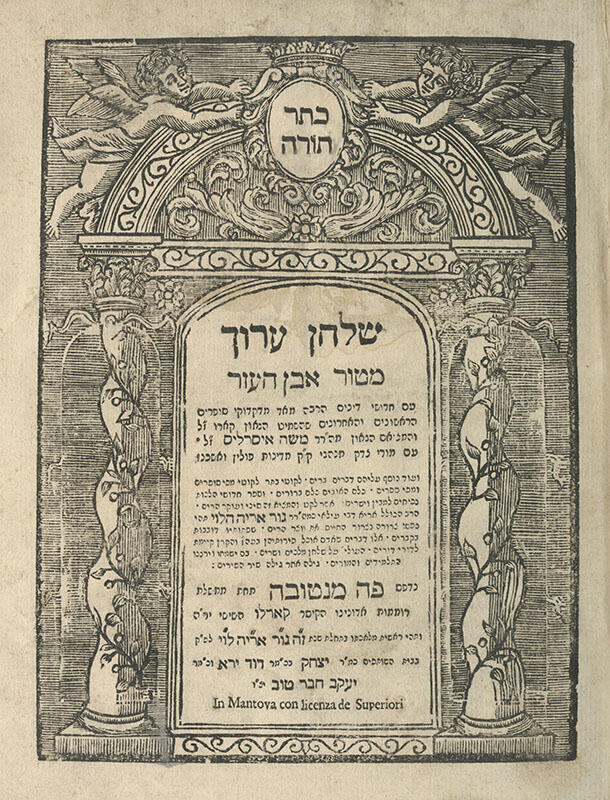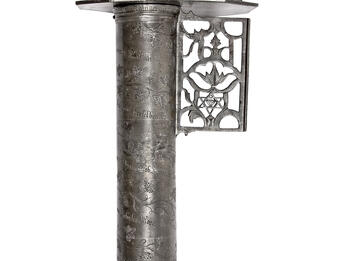Shulḥan ‘arukh (Set Table)
Joseph Karo’s Shulḥan ‘arukh (Set Table)—printed together with the additions of Moses Isserles’s Mapah (Tablecloth) and first published in 1565—was a codification of Jewish law that was easy to use as a basis for Jewish observance. It became accepted throughout the diaspora as the basis for traditional halakhic decision-making and is still considered an authoritative text today. This title page is from a version from Mantua that was published in many editions. One early edition included a title page with portraits of great rabbis. This did not meet with the approval of the rabbis of Mantua and that title page did not appear in subsequent editions of the work.
Credits
Shulchan Aruch with Likutei Rabbi Gur Aryeh Ha-Levi.Mantova [1721–1723]. Printed by Yitzhak Ya're Ve-Ya'akov Haver Tov. Towson University Albert S. Cook Library Special Collections & University Archives.
Published in: The Posen Library of Jewish Culture and Civilization, vol. 5.




